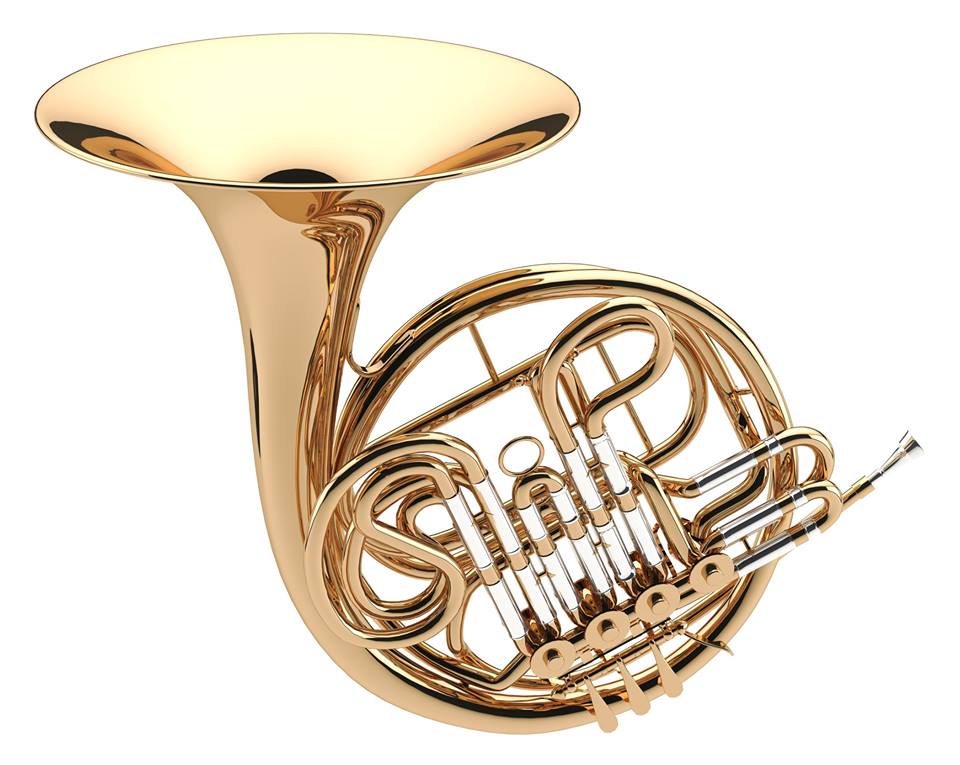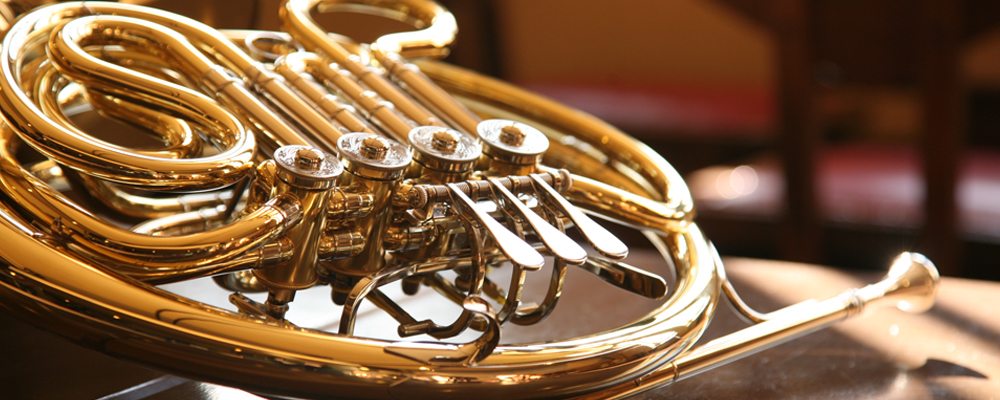
French Horn Learn More
Share

The Structure of the Horn
Learn the parts of the horn
The horn is comprised of the following parts:

F/B♭ full-double horn
The Structure of the Horn
Slightly different from other brass instruments
Protean timbre
Compared with the simple animal-horn instruments of the past, the modern horn is highly complex instrument with coiled tubing. Let's take a look at the structure and how that structure affects the timbre.
Though the soft timbre characteristic of the horn allows it to blend well with strings and woodwinds, it is also capable of bold, dynamic tones when playing with other horns and brass instruments. This wide tonal range makes it an appealing instrument for composers, which is why the horn is one of those instruments that seems to be everywhere, even in orchestral music. Let's listen to some exemplary pieces.
The first is an example of the horn's dulcet tones from Brahm's Symphony No. 1 in C minor, Op. 68, and the other is a powerful performance from Wagner's Tannhäuser.
Soft

Powerful

Can you hear the difference? In both cases, the horn impressively expands to fill the space.
Is the horn's tone backward facing?
The bell of the natural horn was said to face backwards so that the horn could be carried on the shoulder. The bell of today's horn also faces towards the rear of the player. How does this backward-facing bell affect the tone?
Indoors, the horn's tone reflects off of the wall at the back of the stage before arriving at the audience. Thus, the quality of the tone will be affected by the materials used to make that wall.
Generally, the reason why people say that the tone of the horn is soft is because it loses its edge when it reflects off of the wall, but when the listener faces the bell directly, it has that boisterous tone characteristic of brass instruments. Let's take a listen. When heard from behind the player, the tone has quite an impact.
The tone is soft when heard from in front of the player.

The tone is more boisterous when the listener is facing the bell.

The levers are operated with the left hand
With most brass instruments, the levers or pistons are operated with the right hand. With the horn, however, the player puts the right hand into the bell, and so the levers are operated with the index, middle, and ring fingers of the left hand. The instrument is supported with the little finger of the left hand and the thumb of the right hand inside the bell. Some weight is also placed on the skin between the thumb and index finger on the left hand. Because of the weight of the instrument, people who practice a lot sometimes get what are called horn calluses.
The weight of the instrument will depend on the thickness of the metal that forms the tube, but generally speaking, a single will weigh 2kg; a semi-double, 2.3kg; a full-double, 2.5kg; and a triple, 2.8kg. An increase of only 0.1kg will put a crushing weight on the little finger of the left hand.
Care and Maintenance of a Horn
How to take care of a horn
Not brushing your teeth will have catastrophic results!
The horn is made up of a tube the size of a ballpoint pen that gets gradually larger, and if you do not keep your mouth clean, a catastrophe is just waiting to happen. One day, you will think that something is not quite right, that it is too hard to play, so you remove the slide and blow into the mouth piece. Surprise! Some mysterious matter will come flying out. It's slime!
Because you did not brush your teeth before playing, the bits and chunks of food stuck to your teeth collected inside the horn and rotted. Playing while you eat is also an outrageous mistake. Even if you clean up before you play, the instrument requires regular maintenance. Read the owner's manual carefully, and take good care of your instrument.
How to hold the horn?
Hold the horn by the thicker outer tube, not by the center part. The center part has moveable slides, and they may bend under pressure and become non-functional.
Place the horn on a flat, wide surface
It is dangerous to leave a horn on a chair. The bell protrudes and sticks out beyond the chair, so it would be very easy for someone to accidentally run into it and knock it on the floor, denting the tubing. In that case, the only person to blame is the one who left the horn in an unstable place to begin with.
A horn should be placed in a wide, flat area that can contain its entire bulk. Whether the valves are facing upward or downward, make sure that the instrument is balanced and stable. Never ever stand a horn on its bell, like a tuba. It is very unstable in this state and will fall over.

The twisted bell stem of a horn.
The lifespan of a brass instrument is several decades
What is the average lifespan of a brass instrument? In school brass bands, where the instruments are passed on from upper classmen to lower classmen, some instruments last more than ten years. Many of the instruments used by Austria's Vienna Philharmonic Orchestra are several decades old. The Vienna Philharmonic values tradition, and they have preserved their traditional timbre. The fact is, however, that even strong metal will wear out over time, and the levers and other places that come into contact with the hands will develop holes. When that happens, they fix it with a patch and play it with respect. The lifespan of an instrument is determined by how it is handled.
